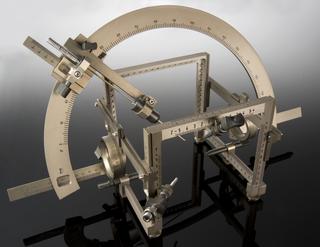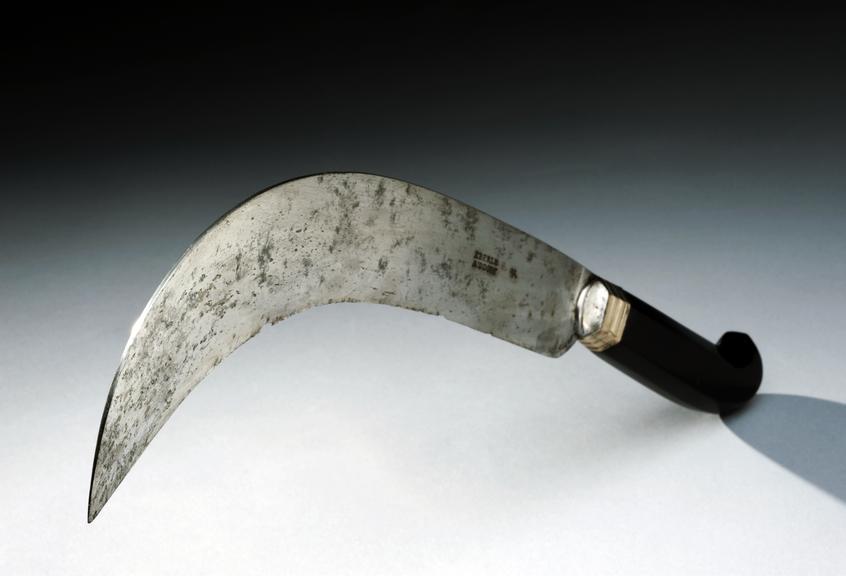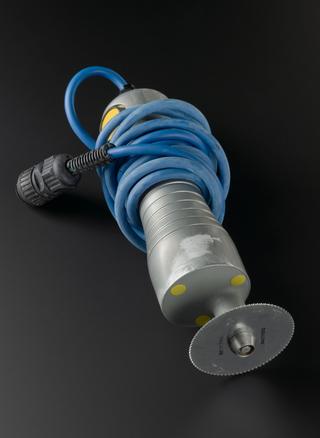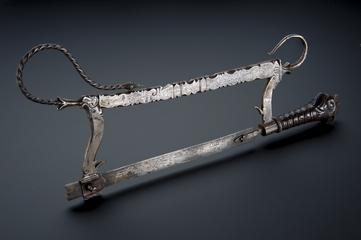




Amputation knife, probably by Eberle, possibly German. 18th century, steel, silver and ebony
The curved shape of this amputation knife was common in the early 1700s. Amputation knives became straighter once the practice of leaving a flap of skin to cover the limb stump became the preferred amputation method. Ebony was a common material for handles as it is a hard-wearing wood. This knife was probably made by Eberle in Germany, as indicated by the inscription on the silver blade.
Details
- Category:
- Surgery
- Collection:
- Sir Henry Wellcome's Museum Collection
- Object Number:
- A622731
- Measurements:
-
overall: 20 mm x 330 mm x 121 mm, .184 kg
- type:
- amputation knife



